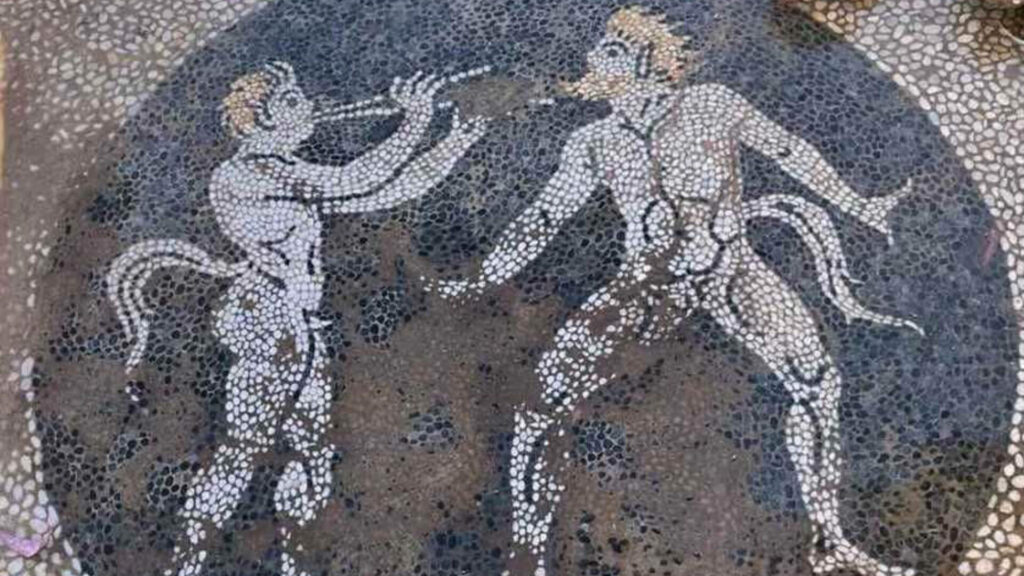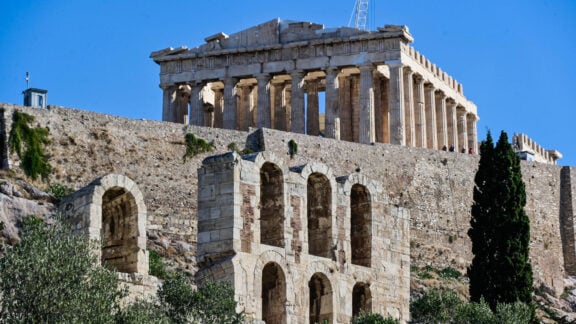An ancient mosaic floor tracing back to 4th century BCE has been found in the town of Eretria on Evia during the installation of a new water pipeline.
The Greek Ministry of Culture announced the discovery of the mosaic floor (made with coloured pebbles in white, black, red, and yellow), which was uncovered as a result of a water pipeline project on the island.
The square room (3.50m by 3.55m) was found in a dwelling situated in the middle of the settlement, with the centre image of the mosaic depicting two satyrs, the male nature spirit companions of Dionysus.
One of the yellow-haired satyrs has a beard and appears to be dancing to music played by the other on a double flute.
It is thought that the square room was used as an andron, a space for gatherings, banquets and other celebrations.
Following its original use, the room was repurposed as a cemetery during the early Christian era (5th-6th century CE), with archaeologists discovering five tombs within the embankment of the room and another five just outside it.
The discovery was made as part of the “Replacement of the Eretria Water Supply Network” project, funded by the Operational Program “Transport Infrastructure, Environment, and Sustainable Development 2014-2020”.
The project is monitored by the Euboea Ephorate of Antiquities, whose specialized personnel oversaw the excavation.
The local Council of Monuments of Central Greece decided to temporarily cover it and reroute the water pipeline in order to preserve the mosaic while allowing for future studies.









